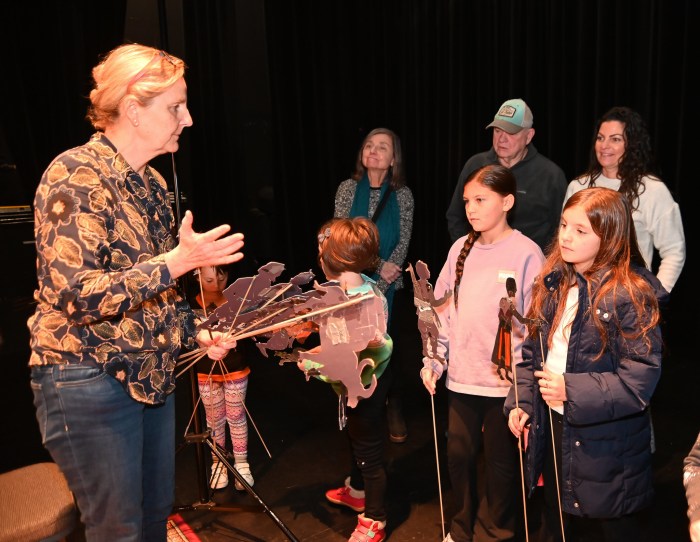
Bologna is city that thrives on students working, studying and eating. Founded in 1088 A.D. (and thought to be the world’s oldest university) students make up nearly a third of Bologna’s population. The culture of Bologna often revolves around the students and their history.
The Archiginnasio, near Piazza Maggiore, was created as a common space for both the artistic and scientific students. Although the university is now centered around Piazza Verdi, the Archiginnasio remains an important stop for students and tourists. Thousands of crests cover every wall, each representing the noble and esteemed alumni from the university’s beginnings. The Archiginnasio also houses an Anatomical Theater. The room, almost completely destroyed during World War II, was intricately reconstructed using remaining materials. The table where bodies would be examined is in the center of the lecture hall, and the professor would sit in a pulpit-like structure with a long stick pointing to appropriate anatomy.

Off Piazza Maggiore stands Salaborsa, the city’s main public library. Built over ancient Roman ruins (which can be visited for free in the basement), Salaborsa is packed with students during finals. Its towering ceiling and open rooms allow the building to be constantly bustling, while its private study spaces and long bookshelves make for privacy and concentration. While the Archiginnasio may host original copies of ancient works, Salaborsa is where one can find new books, DVDs and CDs. They provide an opportunity rarely seen at tourist spots in Italy—a place both locals and tourists frequent, use and love.
Piazza Maggiore is the main gathering point, and almost all interesting activities in the city involve passing through it. Around the piazza are restaurants and high-end stores. The statue of Neptune, notable for its non-Catholic subject matter and for inspiring the Maserati symbol, is found here. The massive Basilica of San Petronio, the 10th largest church in the world, is also on the piazza. The construction itself was a brainchild of the people of the city, not the Church. The exterior is incomplete, with building materials abruptly changing halfway up. Pedestals for statues that were stolen by Napoleon and his army remain empty.
Inside in a side chapel is the most famous fresco in Bologna, depicting paradise and hell, created by Giovanni da Modena. This work is highly controversial due to its depiction of Muhammad being tortured by demons in hell. The Basilica also provides a rare meeting of science and religion, with a small hole in the ceiling allowing light to display the day of the year on a meridian line crossing the interior floor. This is one of the largest astronomical instruments in the world.

Many of the porticos that surround the entirety of the city feature art representing life at the time of their construction. The porticos at the corner of Via dell’Indipendenza and Via Rizzoli include depictions of the various crops grown and sold at the time, including one dedicated to the protection of cannabis, a detail many would miss if not looking up and around for it.
Another secret that only the sharp-eyed and aware would notice is outside the old Corte degli Isolani, now a shopping gallery. In the rafters are three arrows lodged into the wood. The common myth is that assassins were sent to kill a merchant but were distracted by an attractive and less-than-dressed woman in the window. Their minds elsewhere, the assassins missed the intended target and instead their arrows got stuck in the wood, where they have stayed for thousands of years. Palazzo Podestá, one of the buildings that make up Piazza Maggiore, features a whispering archway, where one can face a corner and clearly hear their partner on the opposite end talking quietly. Many now believe that this spot was used for lepers to confess sins without getting too close to the priest.
Students’ superstitions revolve around the ability to graduate. Piazza Maggiore features an elevated square in the center, and rumor has it that students who cross this section diagonally will not finish their studies. More intensely followed, however, is the myth that students who climb the taller of the two medieval towers at the end of Via Rizzoli will not graduate. The towers, a symbol of Bologna, were built as a competition between two of the city’s richest families, but construction on one had to be abandoned as it began to dangerously tip. Now, the leaning tower provides tourists with a cousin of the more famous leaning tower in Pisa, while the taller tower provides a full panorama of the city from above, the highest spot to see such a sight in the middle of the city.
Students who choose to wait to climb the tower will, according to legend, see their graduation day. There are far too many students to have a single graduation ceremony. Therefore, the university spreads graduations throughout the year. Due to this unique situation, a visitor can see graduation celebrations happening throughout the year. A graduate’s entire family will come to the city to see their loved one receive a diploma. Graduates then don crowns with leaves and parade the streets of Bologna throughout the night, taking pictures, making noise and music, and laughing together as a final goodbye to the city.
Bologna is considered the food capital of Italy. Emilia-Romagna, encompassing Bologna, Parma and Modena, originated some of Italy’s most famous foods: melt-in-your-mouth Parma ham, mortadella di Bologna (the real baloney that puts what we have here in supermarkets to shame), Parmigiano Reggiano—imitated but never equaled—and Modena balsamic vinegar. Famous are the pastas, tortellini and tortelloni, and the signature dish of the region—Bolognese sauce.
And if you decide to travel further, it’s a short train ride to places like Florence, Parma and Modena.
Westbury resident Ryan Dobrin, a junior at Wesleyan University in Connecticut, spent the fall semester at the University of Bologna. His grandmother Lyn, Anton freelance writer, visited him. Ryan did the writing and Lyn the editing.


































